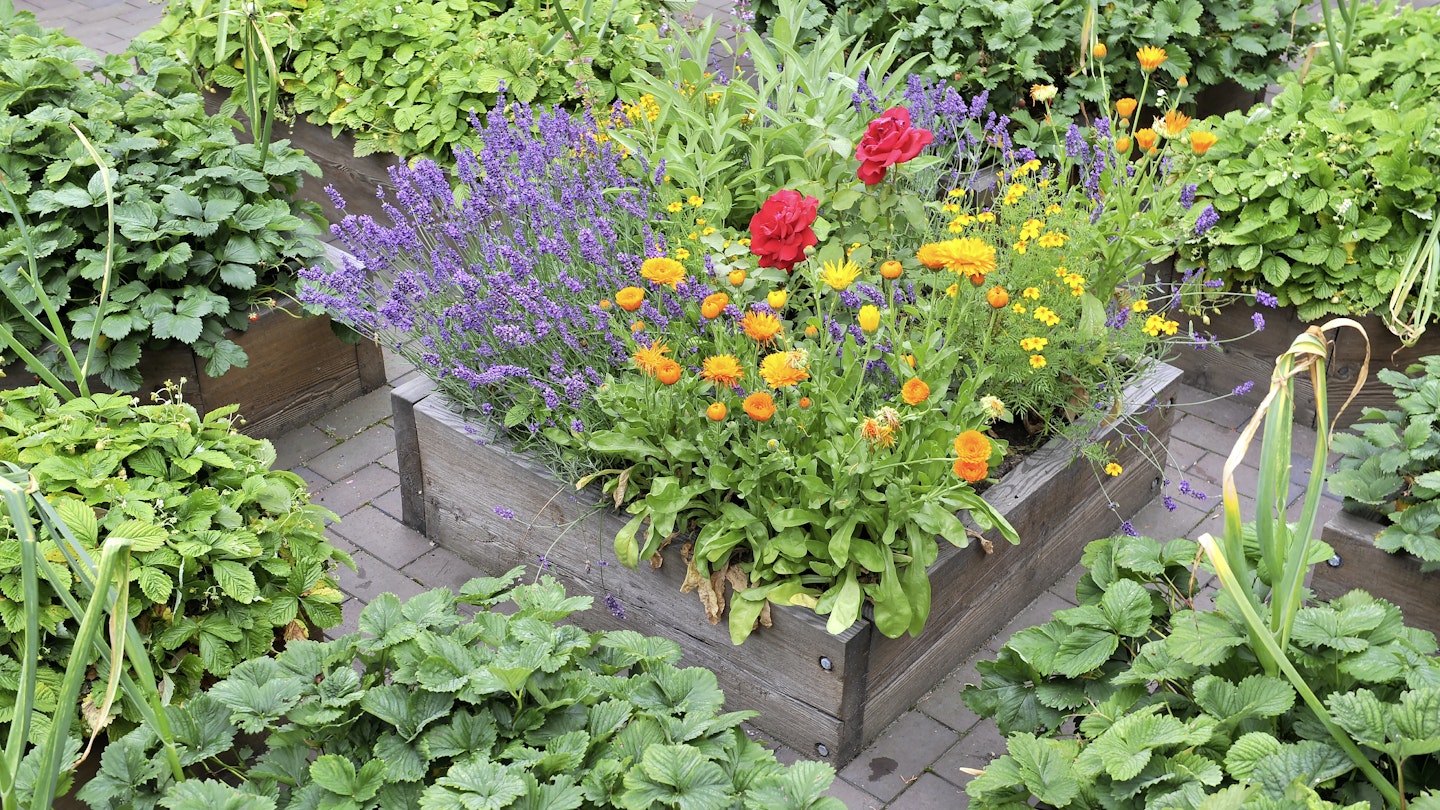You don’t need to spend a fortune to make your garden stand out from the crowd. Calendula, or pot marigolds, and their cheerful, sunny blooms are cheap bought as seed and are incredibly easy to grow, bringing a zingy glow to allotments and home borders alike. Did you know that 2021 has been named the year of the calendula by Fleuroselect, an international plants organisation? It’s no wonder it’s being celebrated – it’s the original all-purpose plant, perfect for pollinators, veg plot companion, cut flower, medicinal and culinary marvel and vibrant planting partner – and now’s the perfect time to get sowing. Here’s our guide to this easy annual plant for all size gardens!
In the garden
■ Sown now, calendula will flower from summer right through until autumn, and sometimes you’ll get the odd flower in the depths of winter when least expected!
■ One packet will generate dozens of plants – you can sow them in pots or at the front of borders in a sunny spot.
■ Calendula is a free spirit and will self-seed around the garden, popping up anywhere from paving cracks to gravel areas – but they always look lovely, wherever they go. Just weed out any that have got too happy if you wish!
■ The bright, beautiful flowers are a magnet for many pollinators, with the open centres the perfect landing pad for hoverflies and bees. Why not add zesty calendulas to your pollinator garden? Mix them with salvias for a striking purple-orange combo, and try to choose open-flowered varieties that have more accessible pollen and nectar.
Easy to grow
■ You can simply throw these hardy seeds where you’d like them to grow now, but if you’d like to plan beforehand where to plant, sow seeds in small pots or trays for planting out. Calendula are really easy to germinate, and just water when dry.
■ Calendulas are low maintenance plants to be treated as annuals, which means they grow and flower in the same year, but they may survive year on year if the winter is mild.
■ Calendulas are unfussy plants that do well in most ordinary garden soils, including poor, dry soil. They flower best in full sun, but also tolerate light shade. The only things they don’t like are very wet, overly fertile soil and deep shade.
■ Seed saving is simple: wait for the clenched fist-like seeds to turn buff coloured and collect, then store somewhere cool and dry.
Uses around the home
■ Calendula stems are sturdy enough for picking a posy for the vase, and longer-stemmed varieties, such as ‘Indian Prince’, will form a bunch better.
■ Calendulas were sometimes grown as part of the home medicine cabinet. The orange petals are still added to skin care balms and used to make an anti-inflammatory tea.
■ It has a long history as a kitchen garden plant, hence its traditional place grown on the allotment. The flowers are edible and, picked whole, can be used to thicken soup.
■ Add the peppery petals to salads and soups as a zingy garnish.
■ Calendula petals leave their colour behind if gently heated and can be used as ‘poor man’s saffron’ to colour rice dishes, or used to colour cheese and cauliflower.
■ The extracted colour can be used as a clothes dye too, producing shades of orange, light brown and yellow.
Our pick of ones to try
 1 of 6
1 of 6Calendula officinalis
The original species plant, best for self-seeding and for classic orange tones; teams well with purple salvias.
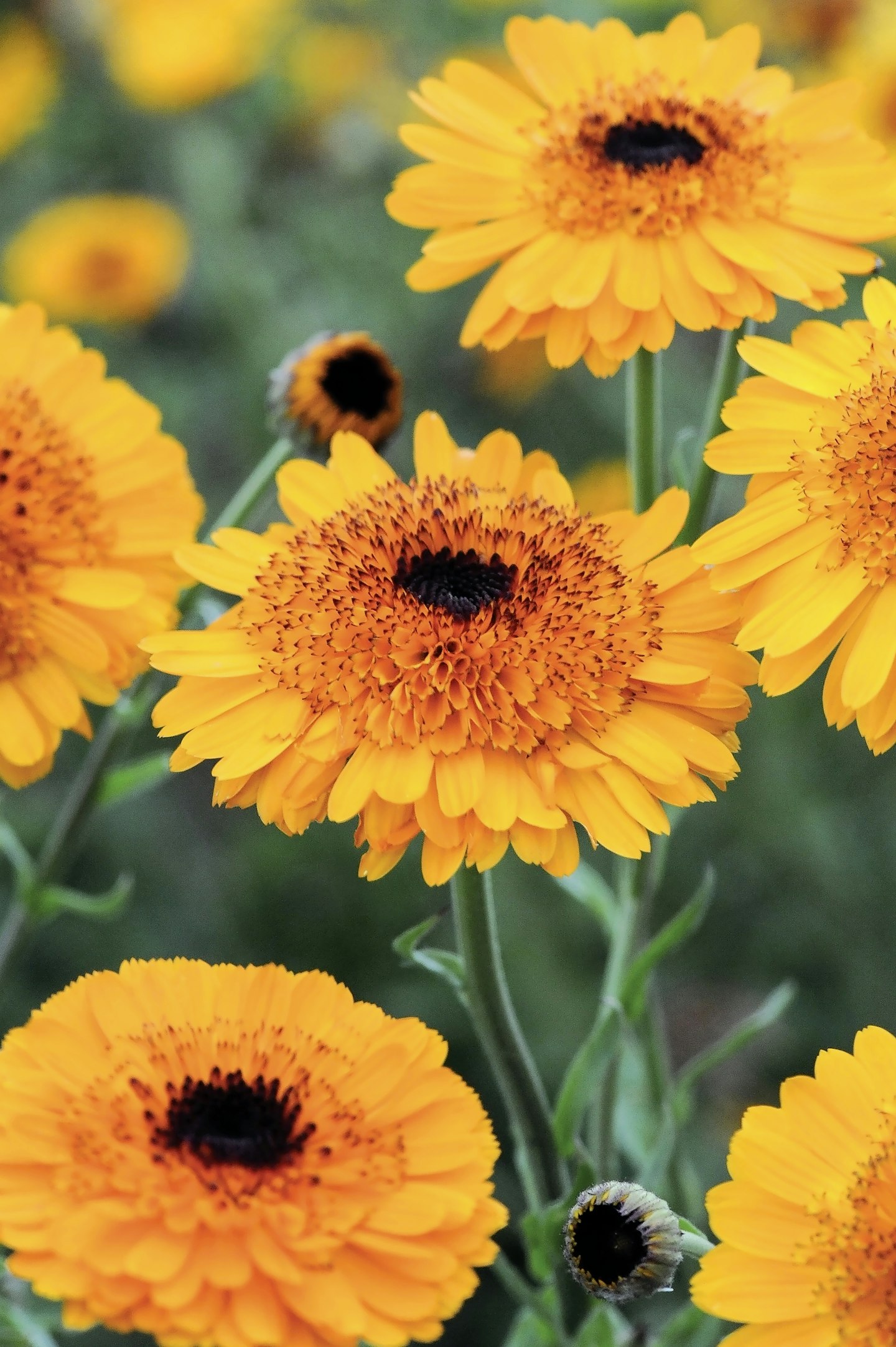 2 of 6
2 of 6'Crown Orange'
A lovely hot orange variety with double-crested blooms. For borders or to stand out in patio pots.
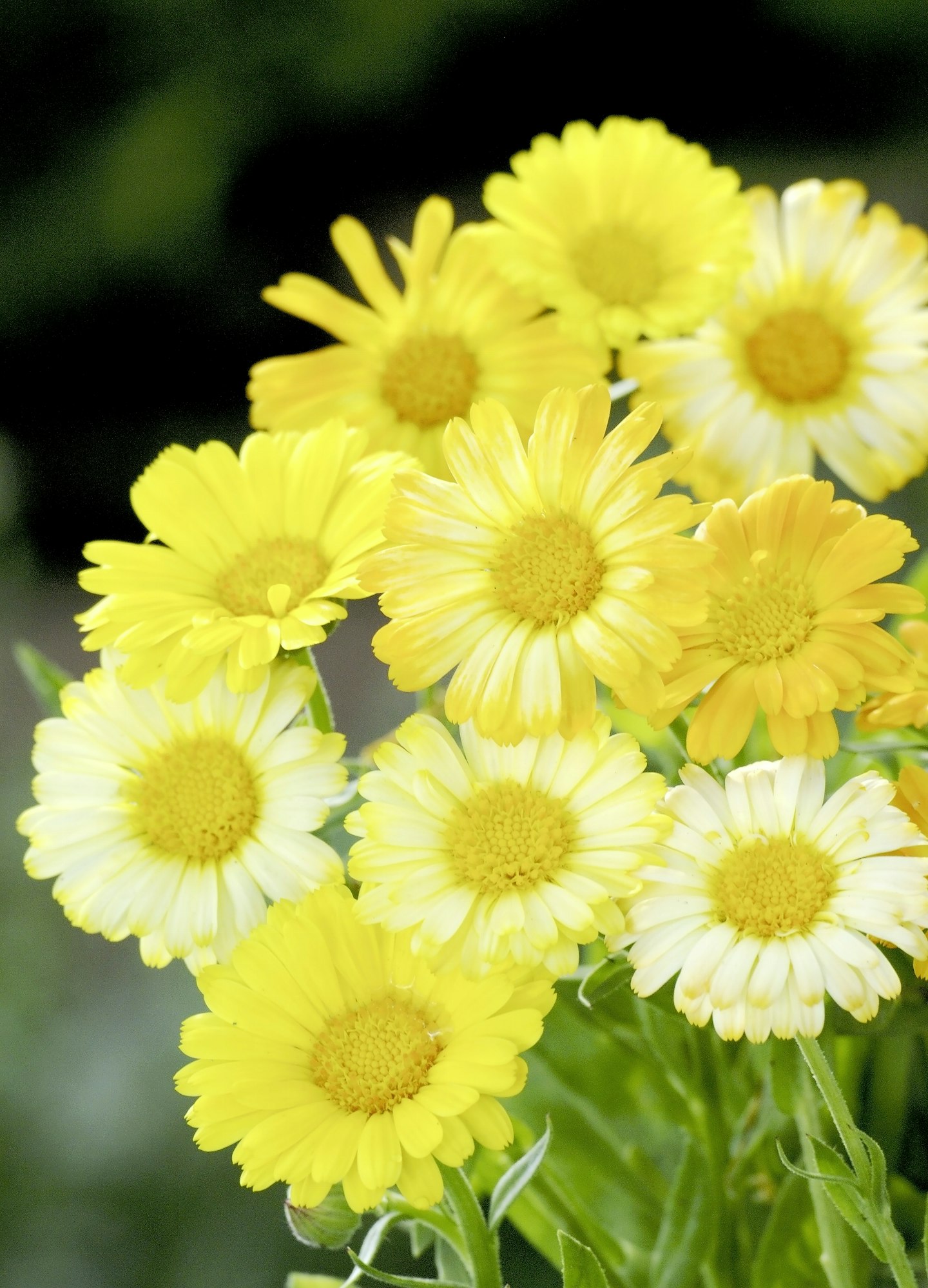 3 of 6
3 of 6‘Citrus Daisy Mixed’
A bright citrus yellow mix of flowers to team well with blues, purples and greens.
 4 of 6
4 of 6‘Kinglet Mixed’
A mixed bag of apricot, cream, gold and yellow-crested blooms. Good for a loose colour scheme.
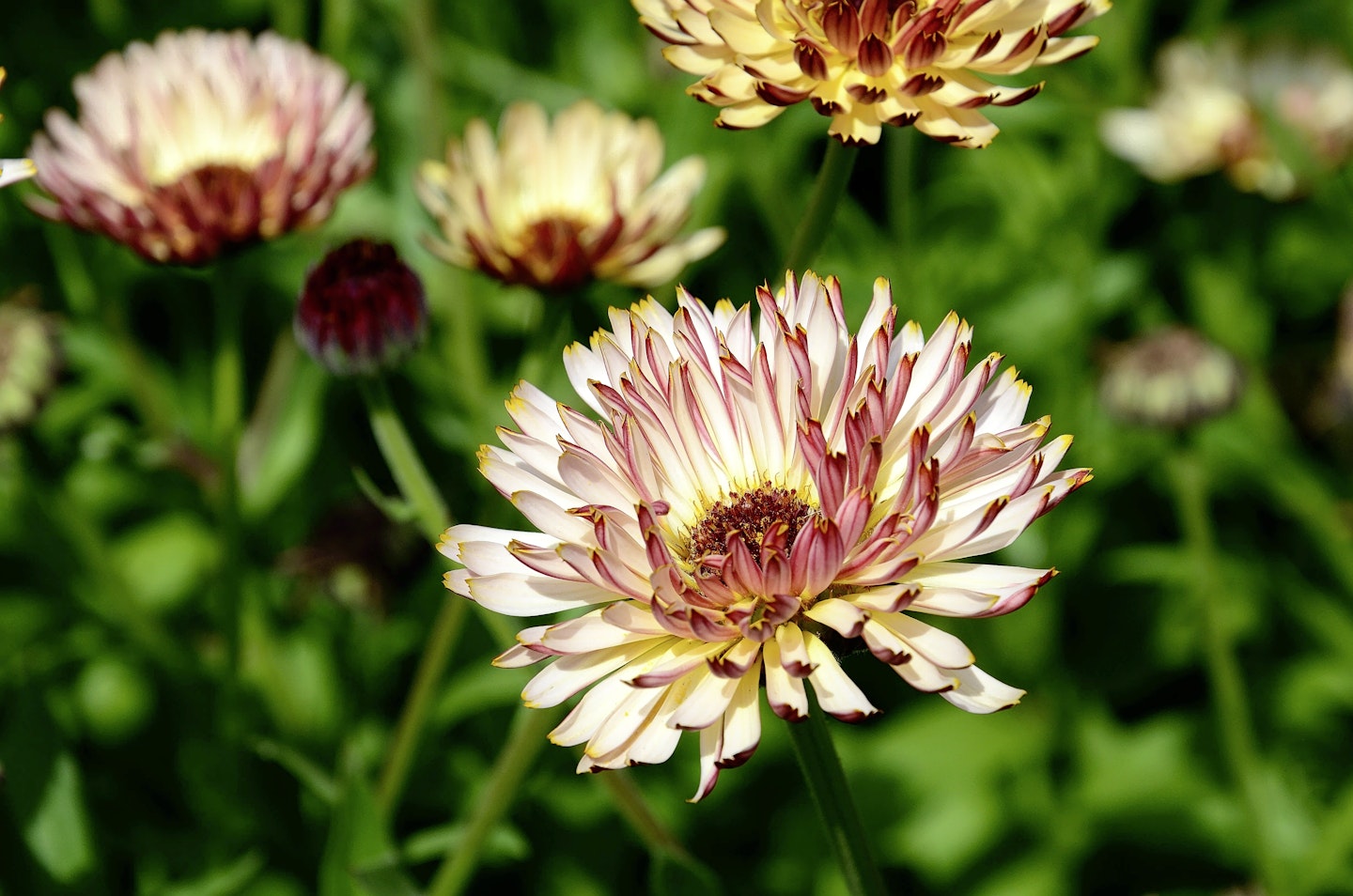 5 of 6
5 of 6‘Sunset Buff’
A soft buff apricot version of 'Indian Prince' with a dark centre and red undersides. For the cutting garden.
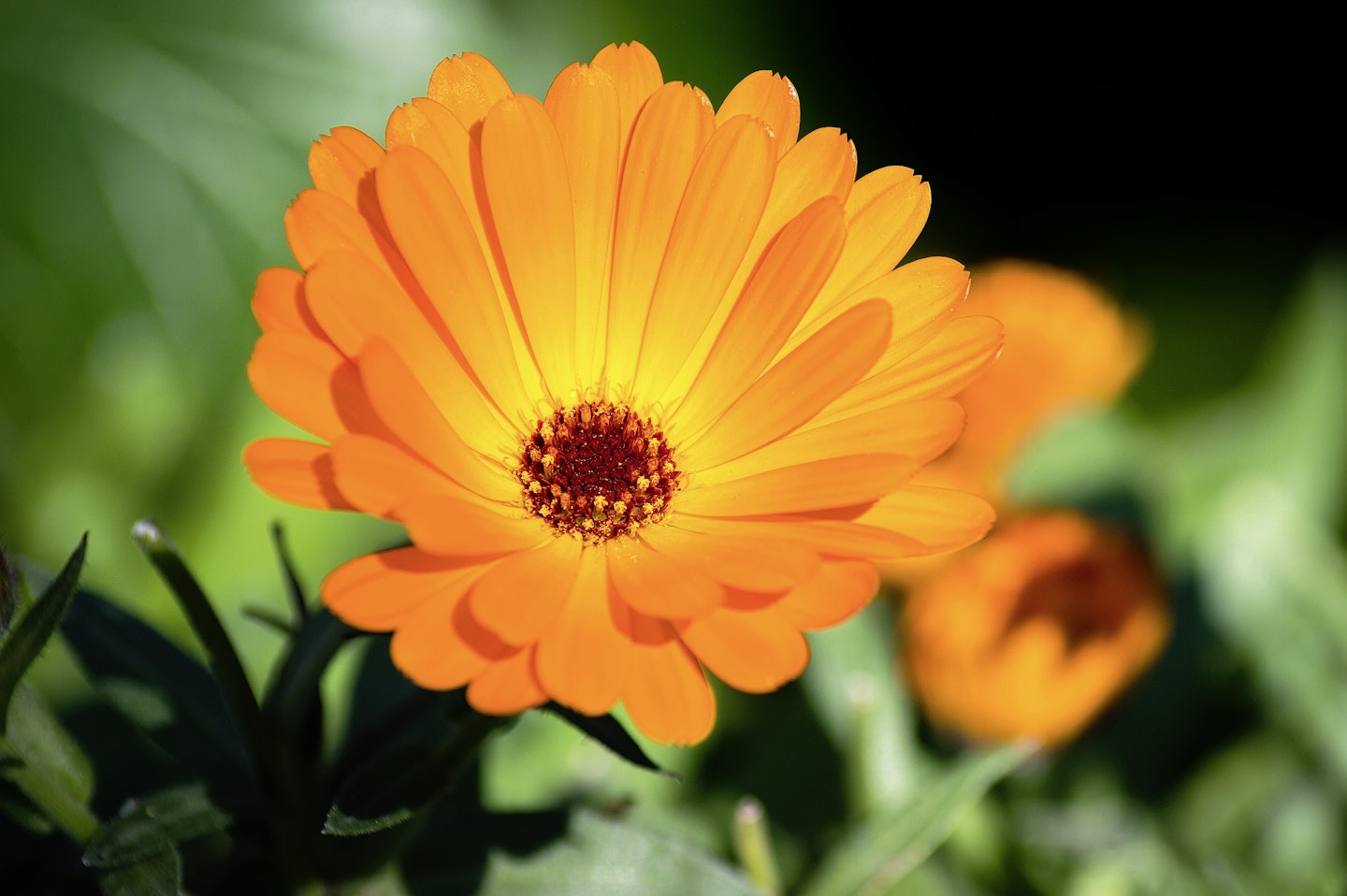 6 of 6
6 of 6‘Indian Prince’
Deep orange with a crimson centre and underside. Tall and great for cutting for the vase.
